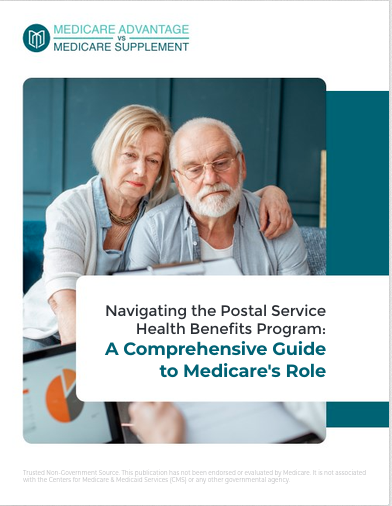Key Takeaways
-
Medicare Advantage plans are popular due to their extra benefits and lower upfront costs, but they come with network restrictions and potential out-of-pocket expenses.
-
Original Medicare may provide more flexibility and nationwide coverage, making it a better choice for some beneficiaries depending on their healthcare needs.
The Popularity of Medicare Advantage—Why So Many Choose It
Medicare Advantage (Part C) plans have seen a surge in enrollment over the years, with millions of beneficiaries opting for them instead of Original Medicare. These plans are privately offered and bundle Part A (hospital insurance) and Part B (medical insurance), often including prescription drug coverage (Part D) and extra benefits such as dental, vision, and hearing services.
The appeal of Medicare Advantage lies in its convenience. You get all your Medicare coverage under one plan, sometimes with additional perks that Original Medicare doesn’t offer. Many people are drawn to these plans for their lower upfront costs and structured benefits, making them seem like a cost-effective option. Additionally, Medicare Advantage plans often include fitness memberships and wellness programs that encourage a proactive approach to healthcare.
However, while Medicare Advantage plans may work well for many, they are not the best choice for everyone. Understanding the trade-offs can help you make a more informed decision about your healthcare coverage.
How Medicare Advantage Plans Work
Medicare Advantage plans operate through a network-based system, meaning you may need to see doctors, specialists, and hospitals within the plan’s approved network. Depending on the type of Medicare Advantage plan, you may be required to get referrals for specialist visits, and out-of-network care could result in higher costs—or may not be covered at all except in emergencies.
Types of Medicare Advantage Plans
There are several different types of Medicare Advantage plans, each with distinct rules regarding coverage and network restrictions:
-
Health Maintenance Organization (HMO) Plans: Require members to use in-network providers and often need referrals to see specialists.
-
Preferred Provider Organization (PPO) Plans: Offer more flexibility, allowing some out-of-network coverage at higher costs.
-
Private Fee-for-Service (PFFS) Plans: Allow beneficiaries to see any Medicare-approved provider that agrees to the plan’s terms.
-
Special Needs Plans (SNPs): Tailored for individuals with chronic conditions, institutional care needs, or those eligible for both Medicare and Medicaid.
These variations can make Medicare Advantage plans appealing to certain groups of people, but they also add complexity in determining which plan is the best fit for your specific needs.
The Downsides of Medicare Advantage Plans
While the benefits of Medicare Advantage can be appealing, there are several limitations to consider before enrolling in a plan.
Limited Provider Networks
Unlike Original Medicare, which allows you to see any doctor or specialist nationwide who accepts Medicare, Medicare Advantage plans typically require you to stick to a specific network of providers. This can be restrictive, especially if you travel frequently or move between states for part of the year. If you have a seasonal home or require care while visiting family, limited networks could be a significant drawback.
Out-of-Pocket Costs Can Add Up
Medicare Advantage plans often have lower monthly costs, but the trade-off is that you pay more in copayments, coinsurance, and deductibles throughout the year. While these plans have a cap on annual out-of-pocket spending, those expenses can still be significant if you need frequent medical care. You might find that what initially seemed like a cost-saving choice ends up being more expensive in the long run, especially for those with chronic conditions requiring regular treatment.
Prior Authorizations and Coverage Restrictions
Many Medicare Advantage plans require prior authorization for certain treatments, procedures, and medications. This means you may need to get approval before receiving care, which can lead to delays or even denials of services your doctor recommends. These hurdles can create frustrations for beneficiaries who require immediate or ongoing care.
Plan Changes Every Year
Medicare Advantage plans are not static. Providers can change networks, coverage rules, or benefits annually. This means a plan that worked for you one year may no longer be the best fit the next year, requiring you to review your coverage during the Medicare Open Enrollment Period from October 15 to December 7. Keeping track of plan modifications and ensuring your preferred doctors remain in-network requires diligence each year.
When Original Medicare Might Be the Better Choice
For some beneficiaries, sticking with Original Medicare may be the better long-term option, especially if flexibility and nationwide coverage are priorities.
Access to Any Medicare-Approved Provider
Original Medicare allows you to see any doctor or specialist who accepts Medicare, without network restrictions. This is especially beneficial if you travel frequently, have multiple specialists, or live in an area with limited provider networks.
More Control Over Your Care
With Original Medicare, you don’t need referrals to see specialists, and prior authorizations are rarely required. You and your doctor have more control over your medical decisions without insurance company interference.
Supplemental Coverage Options
Original Medicare beneficiaries can add a Medicare Supplement (Medigap) plan to help cover out-of-pocket costs like deductibles, copayments, and coinsurance. This extra coverage can reduce overall healthcare expenses, making costs more predictable.
Choosing the Right Medicare Plan for Your Needs
If you’re trying to decide between Medicare Advantage and Original Medicare, consider the following factors:
-
Do you prioritize lower monthly costs, or do you want predictable out-of-pocket expenses?
-
Are you comfortable with network restrictions, or do you need nationwide access to providers?
-
Do you need extra benefits like dental and vision, or is flexibility more important?
-
How often do you see specialists, and would a referral system be an inconvenience?
-
Would you prefer an annual cap on out-of-pocket costs, or do you plan to purchase Medigap for added coverage?
Making Changes to Your Medicare Coverage
If you’re enrolled in a Medicare Advantage plan and decide it’s not the best fit, you have opportunities to switch. You can make changes during the Medicare Open Enrollment Period (October 15 to December 7) or during the Medicare Advantage Open Enrollment Period (January 1 to March 31), when you can switch to a different Medicare Advantage plan or go back to Original Medicare.
Before making changes, review your plan’s Annual Notice of Change (ANOC) to understand how your benefits, costs, and coverage might change for the following year.
What’s the Best Choice for You?
Choosing between Medicare Advantage and Original Medicare depends on your healthcare needs, budget, and lifestyle. While Medicare Advantage plans may be a good fit for those who want an all-in-one package with lower upfront costs, they also come with restrictions that may not work for everyone. Original Medicare offers greater provider flexibility and consistent nationwide access but often requires supplemental coverage to manage out-of-pocket expenses.
To explore your Medicare options, speak with a licensed agent listed on this website. They can help you compare plans and determine which type of coverage best suits your healthcare needs and financial situation.









